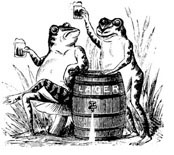
Contrasts in Christendom: Red Lights in Amsterdam, Neon In Malta
ON THE ROCK WITH ST. PAUL
It is sunset in Bugibba. Small tourist hotels and shops crowd a Mediterranean boulevard teeming with holiday-minded Europeans. Most are surely unaware that their vacation spot ranks a full chapter in the New Testament, Acts 28. In A.D. 60 a shipwreck here changed this island forever. The Church of St. Paul’s Bonfire now stands in the boulevard’s median strip. Here a serpent tried to strike down the Apostle Paul after he was cast ashore on Malta.
Malta is a remnant speck of Christendom off the coast of a post-Christian western Europe. Malta is home to 365 Catholic churches, roughly one for every 1,000 residents. Of her 400,000 citizens, 98 percent profess Catholicism and, more significantly, 85 percent attend Sunday Mass. The national flag is the feudal eight-point Maltese cross. Malta’s state university trains future doctors and engineers as well as future priests. Public schools teach Catholicism as a required subject. Political debate is not over a woman’s “right” to abort, but over a couple’s “right” to divorce. Malta quaintly outlaws both modern liberties.
Before arriving in Malta, my itinerary took me to Amsterdam, where liberties flourish. In her Red Light district, prostitutes in underwear pose in storefront windows in shops directly opposite an obsolete medieval cathedral. Paid by credit card, prostitutes ply their trade shielded from onlookers only by a curtain pulled across their street-level window. Their professional status is secured by a Dutch labor union for “sex workers.” Other Amsterdam sights included its airport’s “meditation center,” which holds a Sunday “multi-religious” service in a “chapel” devoid of any cross, but with a large arrow on the floor showing the direction to pray toward Mecca; and the suburban Amsterdam parish near my hotel where an elderly nun tallied Mass attendance for me as “about 15 on Saturday night; on Sunday about 100.”
Malta’s equivalent to Amsterdam’s Red Light district is an area known as Paceville. It too is jammed with passersby in search of a good time. But absent are store windows crammed with either prostitutes or obscene sex toys. Instead, its stores include souvenir statues of St. Padre Pio and ceramics of famous Maltese churches. Paceville’s most provocative storefront has shelves filled with penis enlargement, breast enhancement, and other hedonistic potions. A neon sign blazes the shop’s name: “Made in America.”
You May Also Enjoy
I traveled deep through the heart of Christian infrastructure — monasteries, art, books, and families — to see how it's crumbled and to report back to those who care.
Ed. Note: Fr. Nouwen here continues the chronicle of the time he spent in Germany…
The Church’s universal laws bind everyone, but those who find themselves in a foreign territory are not obligated to observe universal laws that are not in force there.

